Quick Facts
95 acres 38 city blocks
The Potential:
10,500 design + technology jobs
3.3 million sq. ft. office/studio
2.7 million sq. ft. residential
340,000 sq. ft. retail
340,000 sq. ft. hotel
13,000 total new jobs
$20+ million in incremental revenue
The premise of I.D.E.A. District is to transform the Upper East Village from its current status as an economic underperformer into a robust local economy that has the potential to employ thousands of high-paying professionals. And if we accomplish this, an ecosystem of employment will follow. We believe that with alignment and focused effort on the part of all stakeholders, this vision can be achieved in 12 years or less.
A Design for Economic Vitality
Without a strategic framework for development, the East Village, and the I.D.E.A. District in particular, will follow the organic pattern of other redevelopment in downtown with the construction of additional for-sale and rental housing and neighborhood-level services and amenities. In other words, the live and play, but not the “work.” We assume that build out under this scenario would require approximately 20 years. There is a vast difference in both job creation and revenue to the city between a proactive economic development approach and this second “strategy” which lets nature take its course.
Risks to “Doing Nothing”
A failure to act proactively also jeopardizes the retention of institutions and businesses already in the area. In the 2007 white paper on Leveraging Anchor Institutions, CEOs for Cities states, “Universities, community colleges, museums, libraries, municipal enterprises, hospitals, parks, performing arts centers and sports arenas are all included in the array of institutions that can contribute to the culture, economy and vitality of cities…they represent “sticky capital”… as they cannot easily pick up and leave the community. So they have special importance to the re-making of a city and its future … therefore they have special reason to want to be instrumental in shaping their city’s future.”1
We are already experiencing commitment from these institutions. San Diego City College, the NewSchool of Architecture and Design, and the Thomas Jefferson School of Law are participating in the I.D.E.A. Collaborative to tackle tough problems in their immediate neighborhood. They understand that as the quality of place improves, it enhances their ability to thrive by providing housing, transportation options, entertainment venues and civic spaces for students and faculty. Near-by technology+design firms can provide the opportunity for mentoring, internships and, most importantly, future jobs.
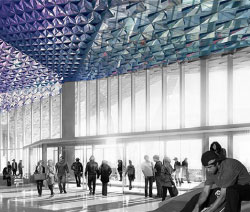
The NewSchool of Architecture and Design recently announced their new global design education offering. The program will build on the school’s tradition in architecture programming and complement the school’s newer programs in digital media arts and construction management. This is part of an ongoing effort to enhance its current offerings through global study opportunities in design-related fields such as interior design, graphic design and product design. Additionally, City College is mid-way through a ten-year expansion plan that will result in a $600 million investment in new facilities.
In other words, these institutions are committing time, talent and capital to realize a better future. The business community, area landowners and local government also need to participate to support a better outcome.
“This is an opportunity for San Diego to become a center of global design education and innovation in design-related fields through our membership in the Laureate International Universities network and collaborations with members of the local design community. We are excited about the prospect of enhancing our current program offerings by providing preparation in fields that are closely aligned with strong job-market demand. We are also committed to meeting the needs of an increasingly diverse and global society, whether that means working for companies in San Diego or around the world.”
We assert, and this economic analysis will demonstrate, that there is significant upside to San Diego in supporting a downtown jobs cluster that specifically targets employees who are already pre-disposed to live there. While the main economic performance criteria for the I.D.E.A. District is the increase in employment in the high-paying sectors of the design and technology economy, the sustainability benefits of reducing commute time and increasing downtown livability are no less real, albeit harder to quantify. Secondary indicators are the economic value added and increased revenues to local government from the greater velocity of development in the I.D.E.A. District versus the business as usual scenario.
Summary of Fiscal Impact
The current level of employment in the I.D.E.A. District is estimated to be 1,367 jobs. At build out the total employment will be 13,028 jobs2 of which 10,697 are in the design and technology sectors based on one job per 225 sq. ft. of office/studio space. This equates to an increase of approximately ten times the existing number of jobs today. Additionally, this build out will translate into nearly $21 million3 per year in net revenues to the city.
Job Creation
- New Design+Technology cluster jobs: 10,6974
- New retail and hotel jobs: 7765
- New jobs to support additional area residents/businesses: 1,5556
Revenues
- $22.6 million per year in property tax revenue
- $8.14 million per year in additional sales tax revenue
- $930,000 to San Diego General Fund
- $883,834 in TOT
- $386,856 in Other Revenues
- TOTAL: $24.8 million per year in total revenue to city
Expenses
- $4 million in additional expenses (Based on avg. cost function of $530 per resident & $185 per employee)
Net Benefit
- $20.8 million in revenue per year
- Far exceeds current revenue of $2.7 million
“The availability of a vibrant design+technology cluster as envisioned by the I.D.E.A. District, within minutes from Tijuana’s globally competitive manufacturing platform, will ensure that the region will soon become a highly productive center for innovation. We at the Tijuana EDC highly support this effort.”
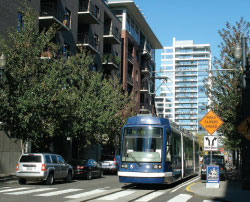
Land Use Plan
The conceptual land plan for the I.D.E.A. District is based on the goal of creating a vibrant and sustainable mixed-use urban neighborhood where employment is the major economic engine. Therefore, 50% of the total allowable square footage (assuming an overall density of 5 F.A.R.) is allocated to office/studio uses. Of the balance, 40% is assumed to be residential (with an even split between for-sale and for-rent, plus 10% affordable and 5% student housing), and 5% each for retail and hotel uses. The following table describes the proposed uses and densities required for an optimal design+technology jobs-driven district.
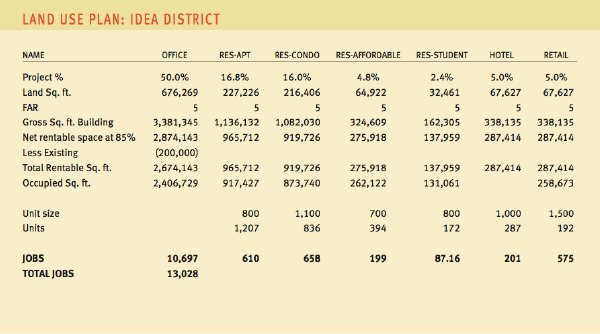
Proposed Development Timeline
The build out of the I.D.E.A. District will occur in roughly four phases over the period of 12 years. The timeline shows the proposed schedule of completion. The first phase, requiring one year of design/ planning and two years of construction, will consist of:
- 150,000 sq. ft. studio/office building including a 30,000 sq. ft. design incubator
- 130 student housing units
- 140 apartments
- 200,000 sq. ft. urban campus for the NewSchool of Architecture and Design
- Five-acre park that will serve as the cultural and social center of the district
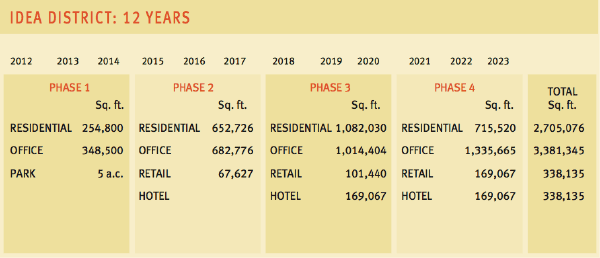

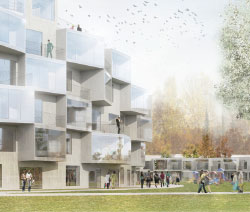
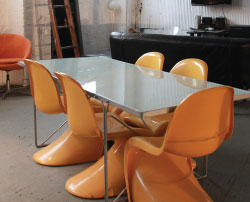
Job Creation Analysis
Job creation in the I.D.E.A. District will occur in four ways:
- Targeting design+technology firms within San Diego as identified in Section Two.
- Recruit new design+technology firms to relocate to San Diego and specifically the I.D.E.A. District to further their creative and business potential.
- Internal growth of these businesses, along with those that service these companies or are attracted to a creative and vital urban environment.
- New companies coming to market as a result of the design+technology incubator, new collaborations, and other entrepreneurial efforts.
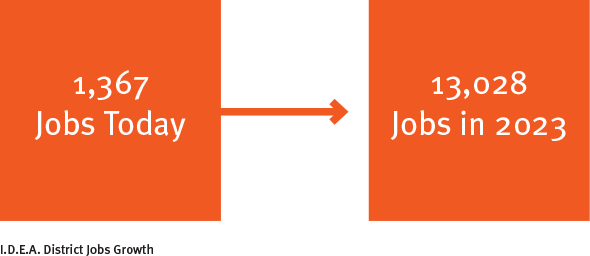
Taken together, this accounts for the 10,500+ design+technology jobs we’re projecting for the District. This will create nearly $680 million in employee wages each year.7
To support and serve this new community of professionals, a significant number of retail and hotel facilities will be necessary and nearly 776 new jobs will be created to meet that demand. Retail and hotel employees will earn approximately $43 million per year.8
Additionally, for every housing unit built and occupied there is an incremental need for workers to serve those households. Based on the IMPLAN model, jobs are generated by increased demand for things such as supermarkets, banks, accountants, contractors etc. In the I.D.E.A. District this will equate to an additional 1,555 jobs or roughly $86.6 million in annual wages.9

Fiscal Impact
The fiscal impact of the I.D.E.A. District to the City of San Diego is determined by analyzing all revenues and expenses to determine net benefit.
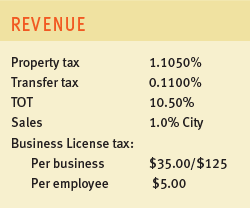
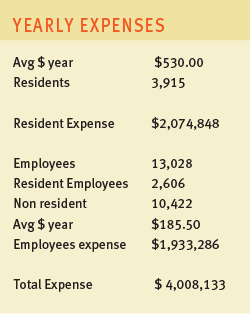
Revenue
Revenue is collected from many sources including property tax, transfer tax, TOT, sales tax, business licenses, and other miscellaneous fees. The following table describes the majority of taxes and fees.10
Expenses
For each additional employee and resident of the I.D.E.A. District there is an incremental cost to the city for public services. These include streets, police, fire, parks, and administrative costs. These costs can be calculated on an average cost per person per year. For the purposes of this report we estimate the cost to be $530/yr for residents and $185.5/yr for employees living outside the district. In addition we have reduced the number of employees by 20% to account for those people who live and work in the district.11
Tax Increment
It is also important to determine the “tax increment” or the difference between the current assessed value of real estate in the district and the value of the property in the district after build out is complete. Assuming that we can identify an appropriate bonding mechanism, this figure helps to determine the potential amount of bonds that can be raised to aid development in the form of infrastructure, parks, etc., as well as fund schools and public safety.
Based on 2011 records from the San Diego County Assessor’s office the current value of the property in the IDEA district is $224 million and the revenue is $2.479 million per year.12 At build out the value of the property is expected to surpass $2 billion dollars13 with yearly revenue of $22.6 million. This creates an annual tax increment of approximately $20 million.
Transient Occupancy Tax
The Transient occupancy tax or TOT is the revenue created from visitors staying overnight in the IDEA district in hotels and motels. The TOT is calculated based on the average daily rental rate of $129 and the average occupancy rate of 62%. The city of San Diego’s TOT rate is 10.5% daily.14 Total annual receipts are estimated to be $883,834.
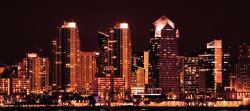
Sales Tax
Sales tax is calculated by factoring the average sales that take place per square foot of retail space by the total amount of retail space available. In the case of the IDEA district there is approximately 287,000 sq. ft. of retail space. Sales are estimated at $350 psf15 and the tax rate in the city is 8.75%. Retail sales within the hotels in the I.D.E.A. District are also included. Hotel retail sales are estimated to be 30% of the total hotel revenue.16 This is approximately $2.5 million in yearly sales. The yearly sales tax revenue is expected to exceed $8.14 million. Of that amount 1% or approximately $930,000 will be directed to the city of San Diego for General Fund expenditures.
Business License Tax
Business licenses, rental unit taxes, and parking meter fees are sources of general fund revenue collected by the city of San Diego to cover expenses relating to the promotion of public safety. Currently these taxes and fees make up 2.9% of the General Fund revenue.17 Business taxes are levied on all businesses that operate within San Diego city limits and are calculated based on the number of employees. Businesses with 12 or less employees pay a flat tax of $34 per year and those with more than 12 employees pay $125 per year plus $5 per employee. For the purposes of this analysis we have limited our review to the additional business license fees generated by the I.D.E.A. District as this area is intended to generate a significant number of jobs.
Based on the creation of 13,028 new jobs in the I.D.E.A .District the additional revenue from business licenses is approximately $65,138. This is determined by averaging the large and small business cost per employee and multiplying that by the total number of new jobs to the I.D.E.A. District.
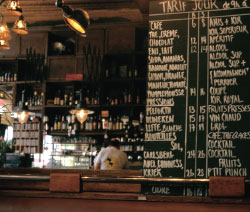
Real Estate Values
Current Real Estate values have been compiled using recently sold properties to create a complete market analysis. We have included the current and projected price, occupancy, turnover and lease rates for the subject area.
RESIDENTIAL–CURRENT
I.D.E.A. DISTRICT
Avg SIZE 989
$ PSF $271.50
Avg $ $274,586.00
RESIDENTIAL–DOWNTOWN:
NON I.D.E.A.
Avg SIZE 1,074
$ PSF $381.48
Avg $ $428,741.00
Residential Housing
San Diego‘s housing ordinance requires that all new residential projects must meet or exceed the existing guidelines of at least 10% affordable housing.
The following are the average recent comparable sales for residential properties within the current I.D.E.A. boundaries as well as comps within other downtown neighborhoods provided in the addendum of this document. As you will see the average price per square foot of $271 in the current Upper East Village area is significantly lower than the $381 psf in other more desirable areas of downtown.18 Once the I.D.E.A. district is built out the $ PSF is expected to be similar to Little Italy and/or Bankers Hill.
In Summary
While it is easy to get lost in the numbers, the implications of this analysis are clear: a proactive plan to build a design+technology jobs cluster in this location can produce significantly higher economic benefits, primarily in the form of high-paying jobs and related revenues, than allowing development to proceed in a reactive fashion. The intentional implementation of the I.D.E.A. District will not only increase the velocity of development, it will also modify the mix of uses in a way that strongly supports existing and new businesses by adding a much-needed jobs base.
Endnotes
- White paper, CEOs for Cities Leveraging Anchor Institutions for Urban Success, August 2007, Pg. 2 ↩
- SD County Tax Assessor; Minnesota IMPLAN group ↩
- Estimated: See Economic Activity Exhibit ↩
- Estimated at 225 sq. ft. office per employee ↩
- Minnesota IMPLAN group; The London Group ↩
- Minnesota IMPLAN group ↩
- California Employment Development Dept., 2010 ↩
- California Employment Development Dept., 2010 ↩
- California Employment Development Dept., 2010 ↩
- City of San Diego Fiscal year 2010 Annual Budget ↩
- Economics Research Associates ↩
- San Diego County Assessor’s Office http://arcc.co.san-diego.ca.us/default.aspx ↩
- Estimated using Cushman & Wakefield Marketbeat 2010 Data and Cap rate projections ↩
- City of San Diego Fiscal year 2010 Annual Budget ↩
- The London Group ↩
- Economics Research Associates ↩
- City of San Diego Fiscal year 2010 Annual Budget ↩
- Sandicor www.sandicor.com; Loopnet www.loopnet.com ↩